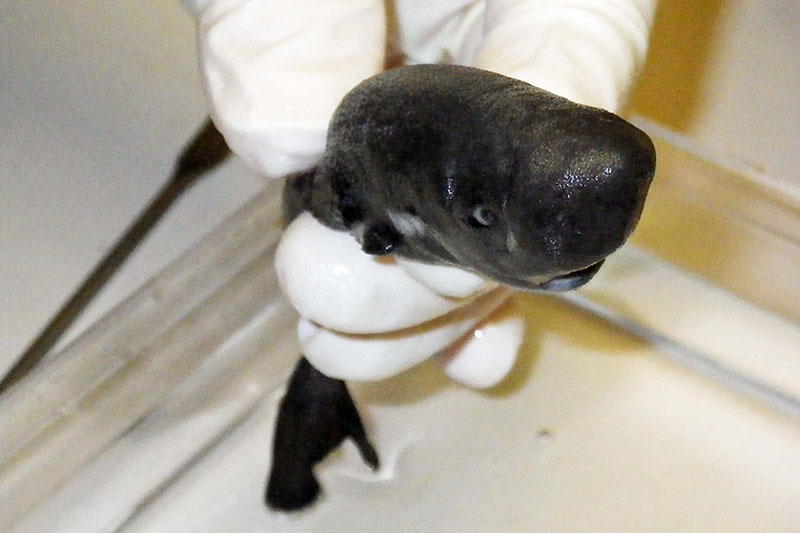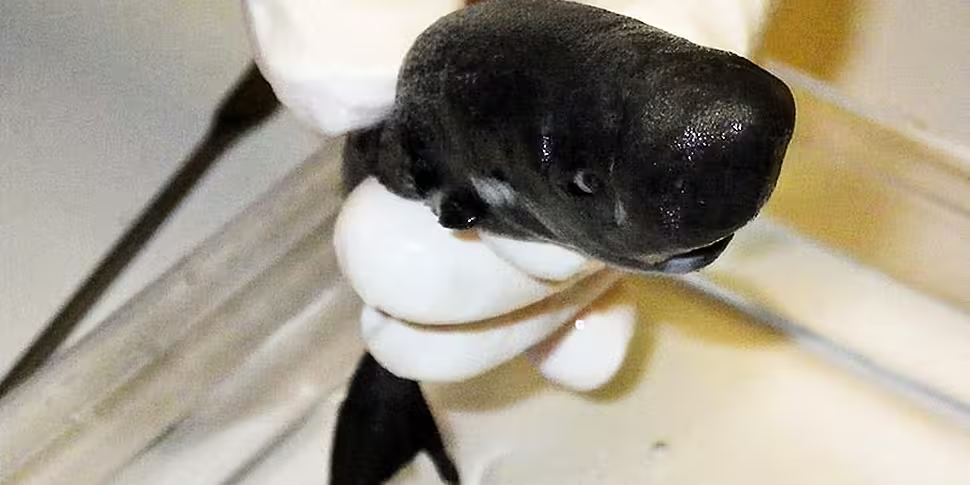A team of researchers has identified a new species of pocket shark.
The new species of kitefin shark is from the Gulf of Mexico.
The American Pocket Shark - named after the pouches it has near its front fins - was collected during a 2010 survey to find out what sperm whales eat.
But it has only now been revealed as a new type of shark.
The five-and-a-half inch male shark has five features not seen in the only other known specimen of this kind.
That original specimen was captured in the Eastern Pacific Ocean in 1979, and is now housed at the Zoological Museum in St Petersburg, Russia.
Researchers said there were "notable differences" between the original Pacific Ocean specimen and the newer specimen from the Gulf of Mexico.
Those differences include fewer vertebrae and numerous light-producing photophores that cover much of the body.
 The newly-identified American Pocket Shark was first discovered in the Gulf of Mexico in 2010 | Image: Tulane University researcher Michael Doosey
The newly-identified American Pocket Shark was first discovered in the Gulf of Mexico in 2010 | Image: Tulane University researcher Michael DooseyThe two species both have two small pockets that produce luminous fluid - with one on each side near the gills.
Researchers believe the shark uses its pouches to squirt a fluorescent fluid to help conceal it from prey or predators.
Identifying the shark involved examining and photographing external features with a dissecting microscope, studying x-ray images and high resolution CT scans.
But the most sophisticated images of internal features were produced at the European Synchrotron Radiation Facility (ESRF) in Grenoble, France.
This used the most intense source of synchrotron-generated light in the world - to produce x-rays 100 billion times brighter than those used in hospitals.
Mark Grace is from the NMFS Mississippi Laboratories of the National Oceanic and Atmospheric Administration (NOAA).
He says: "In the history of fisheries science, only two pocket sharks have ever been captured or reported.
"Both are separate species, each from separate oceans. Both are exceedingly rare."
Henry Bart, director of the Tulane Biodiversity Research Institute, adds: "The fact that only one pocket shark has ever been reported from the Gulf of Mexico, and that it is a new species, underscores how little we know about the Gulf - especially its deeper waters - and how many additional new species from these waters await discovery."
The details of the new species are described in an article in the journal Zootaxa.









